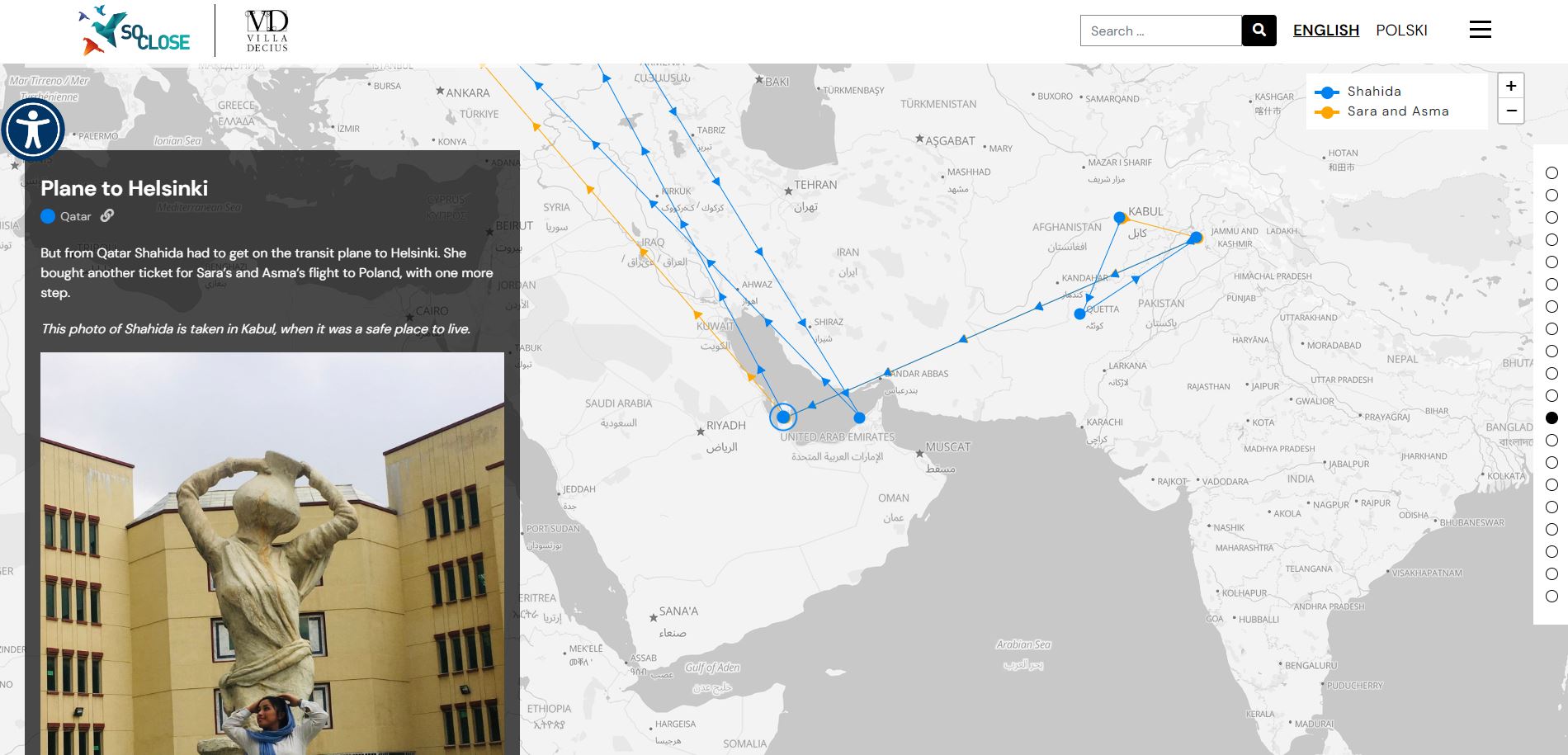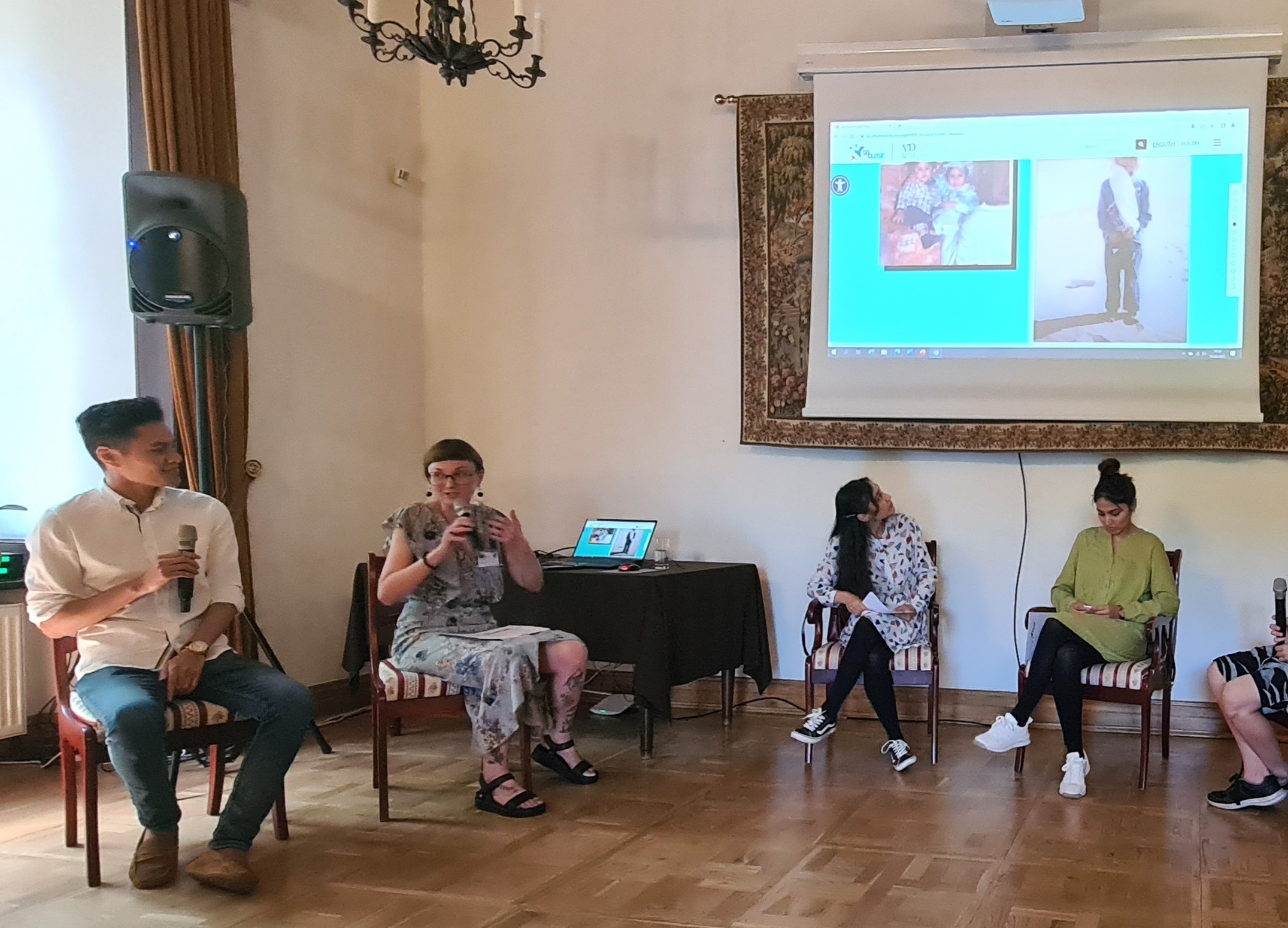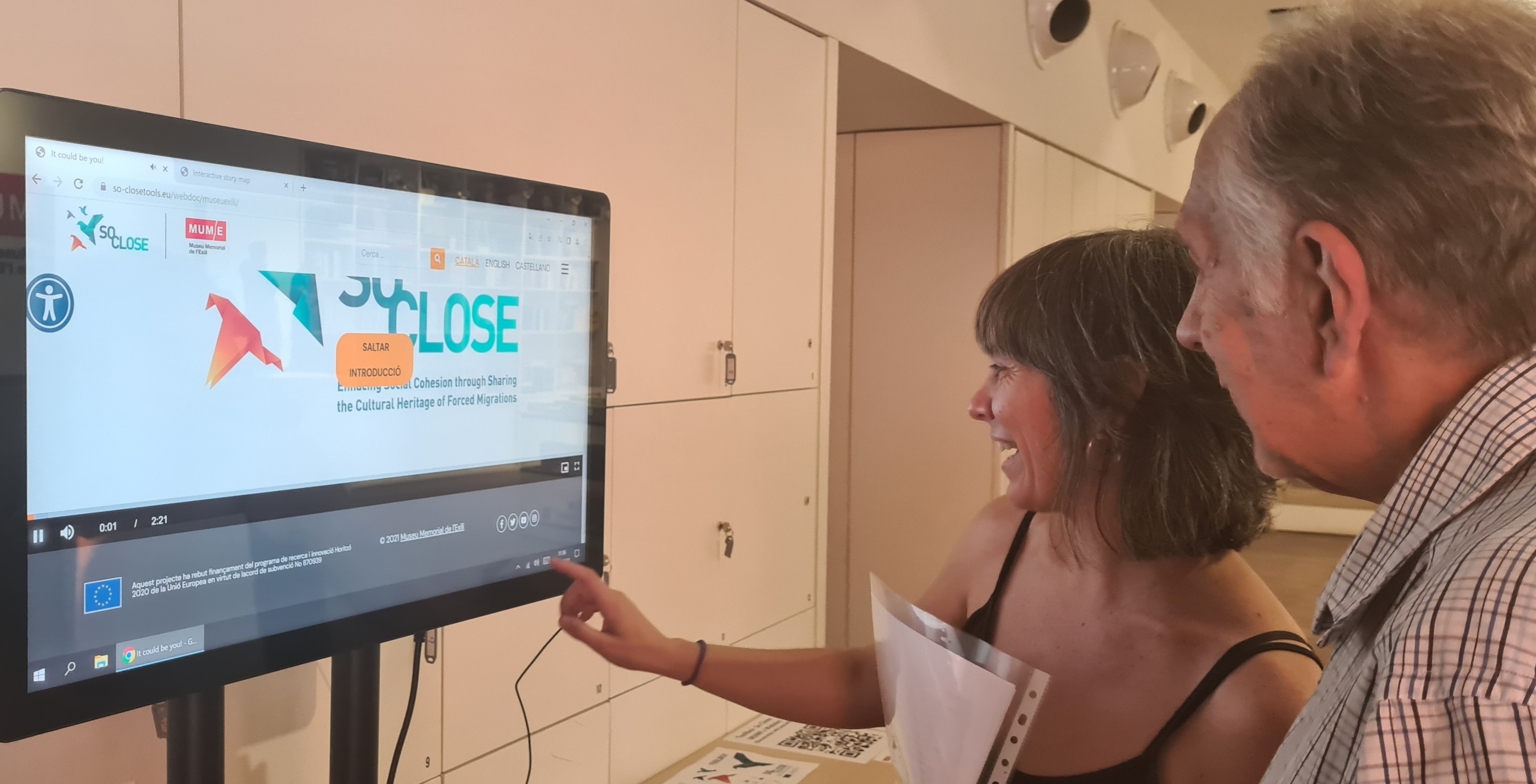SO-CLOSE has designed and implemented three digital tools: a story map, a virtual exhibition, and a web documentary, with the goal to connect the past and present narratives of forced migration. The story map visualizes a migrant’s story by pairing a geographical or political map with sounds and images describing significant locations on the migration journey and the memories and stories associated with it. The virtual exhibition thematically groups multimedia objects in a narrative curated to connect the past and present of forced migration waves. The web documentary is an interactive video web page that presents video clips, still images and text to provide users with a personalized experience of the stories of migration.
In this blog post, I want to discuss three possible ways in which the tools, once filled with content, can be used by cultural institutions, museums or refugee/migrant organizations, to ensure a sustainable and effective implementation.
- As stand-alone tools, to be used exclusively online

Each of the tools can be designed as a stand-alone online solution to narrating migration stories from the past and from today. In this scenario, the end user is an individual who will interact with the web pages on their own, from a location of their choice. Important to keep in mind here is that the content designed as stand-alone must be rich and multifaceted, with clear guides on how to navigate the story and numerous materials that provide background, problematize statements and point to further explorations of the subject (for example by linking to relevant content from approved organizations).
- As supporting tools for in-person activities

At the other end of the spectrum, the tools can be used as support material for in-person activities. The end-user in this case would be an individual that would interact only indirectly with the tools, under the direct guidance of a professional who would be the one showing and explaining the provenience and meaning of the digital content. Examples of instances where this scenario applies are exhibitions, guided tours, trainings, or workshops. Here, the guide, trainer or moderator is the one providing the context and background, so the digital tools themselves can be more paired down, and the content can be more streamlined.
- As digital insert into physical spaces without guidance

A third option is a middle ground between the two earlier scenarios. According to this alternative, the digital tools are used as inserts into physical spaces. Their purpose is to enrich an in-person experience and add new, interactive elements in a more traditional setting. The end-user of the tools, in this third scenario, interacts with the tool on their own, but in a setting that provides cues and guidance as to how the digital narratives should be read, navigated, and problematized. The content of the tools should be at a medium level of complexity, i.e. including details and background elements, but to a lesser extent than in scenario 1. Examples of ways in which the tools can be inserted into guided walks, exhibitions or performance art using QR codes, touch-screen TVs and tablets, or projections on walls or screens.
Creators of the digital stories must consider which of the three scenarios is most suitable to their circumstances (skills, geolocation, resources, target audience, etc.) before designing their narrative and creating content for the tools. In this way, the process of designing narratives and populating the tools with content is at its smoothest and most efficient.



